London is without a doubt one of the most electric cities in the world and its exciting attractions are rivalled only by its sheer size. While it might not be as enormous as Mexico City or Tokyo, London is a sprawling metropolis. Whether you’re planning on staying around the tourist centre or exploring the boroughs far afield from the city centre, which are definitely worth checking out, you’ll more than likely need a crash course on riding the public transport system in London. Uber and black cabs are so expensive in an already expensive city like London, so taking public transit will mean you can save those pounds for something special!
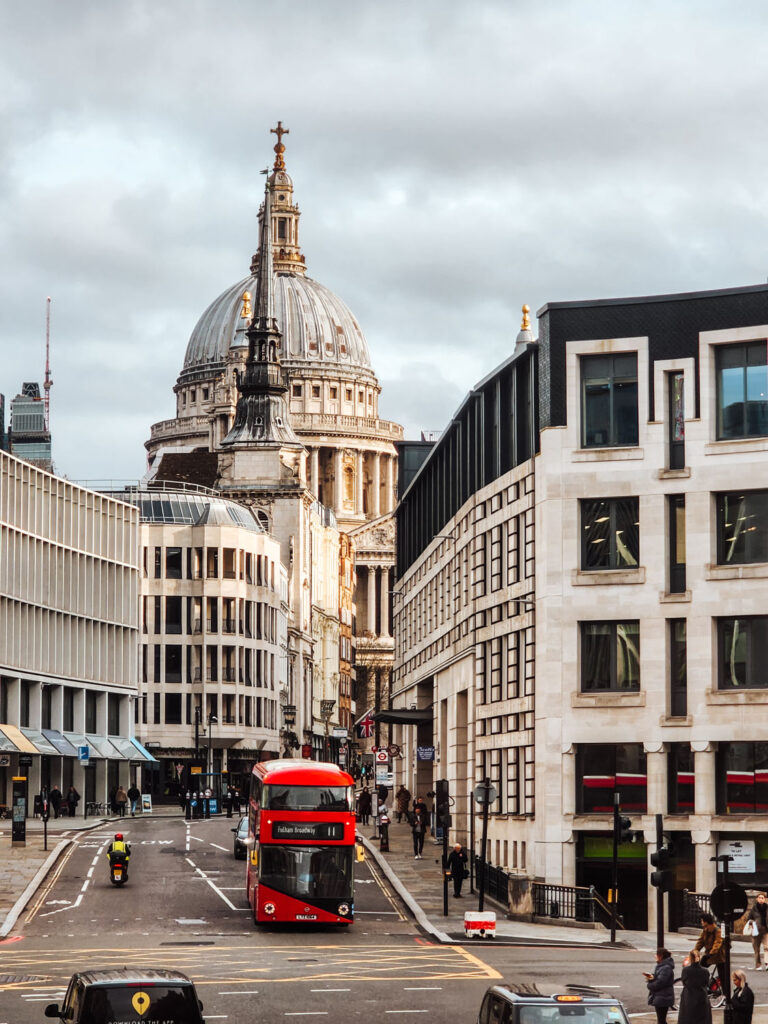
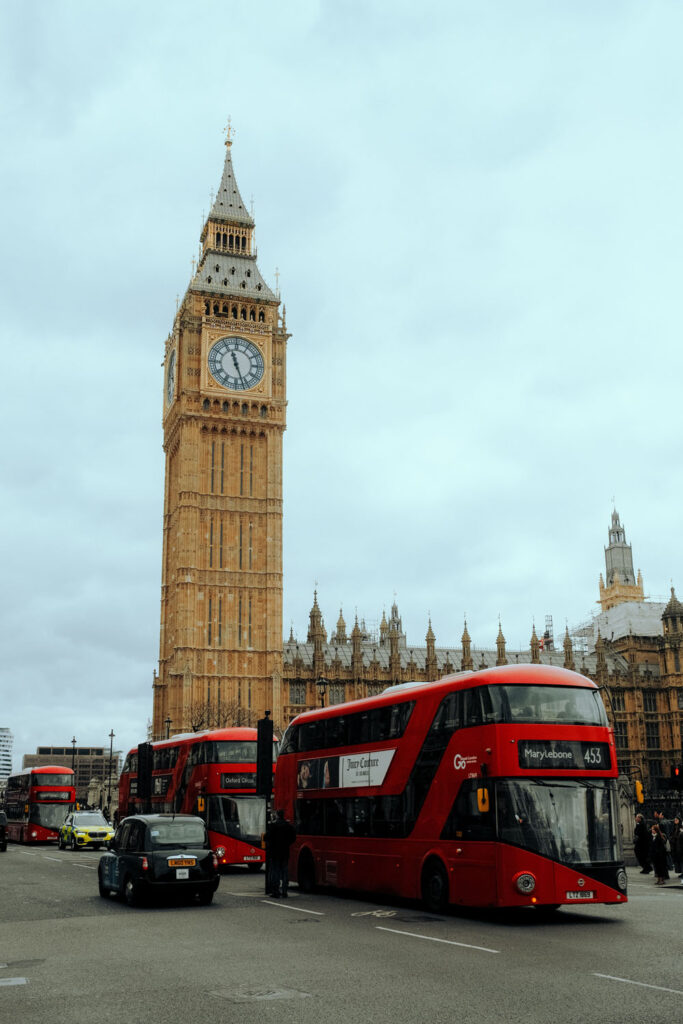
Getting Started: Grab an Oyster Card or Contactless Payment
Inside each station are ticket machines and offices to purchase single tickets. But no one should buy these single paper tickets as they are almost triple the price of using an Oyster Card or Contactless payment. A zone 1 fare using an Oyster card or Contactless payment is only £2.50, but purchasing a single ticket in cash would cost you a whopping £6.30!
Oyster Card
An Oyster Card is a smart card used for travel on public transport in London. Oyster cards work by pre-loading money onto the card, which is deducted automatically when you use it. The card can be used on the London Underground, all London buses, trams, the Docklands Light Railway (DLR), the London Overground, River Buses, and some National Rail services. Using an Oyster card gives you a discounted fare on every ride you take vs cash tickets.
To use your Oyster card, you must tap on and off when you pass through the turnstiles entering and exiting tube stations. When using the oyster card on the bus, you only need to tap on. There is no need to tap off. The Visitor Oyster card costs £5. After getting your card, you need to load it with additional money to travel. You will not get this £5 back, nor will it be added to the balance of your card. You need to find a ticket machine inside any Tube station to load your card with the money. Here you can select how much you want to add to your card. I would start with £20 and reload as needed. You can’t get the money left over on the card back at the end of your trip, so load wisely.
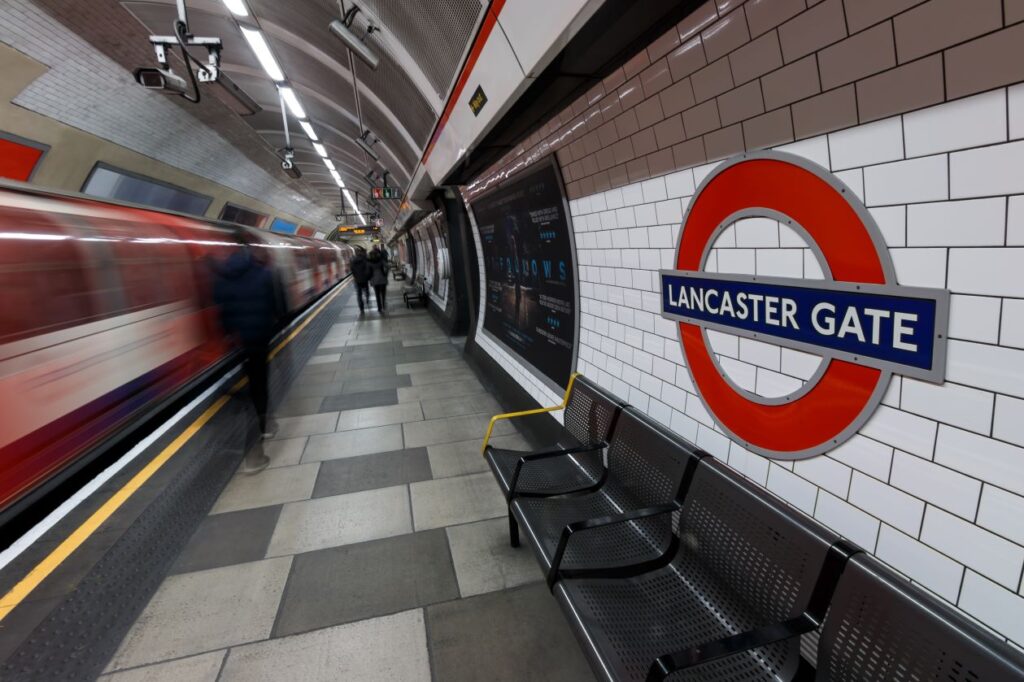
Contactless Payment
In 2022, the Tube introduced the contactless payment option for transport around London. If you have a debit or credit card with a chip that can be read wirelessly and is enabled for contactless use, you can use this method to pay for your journey directly at the turnstile. Just as you would with an Oyster card, this also works with your phone using Apple Pay. Simply touch the contactless payment method to the yellow card reader on the turnstile, and you’ll be let right on through. And do the same thing when you exit the station. You will be charged at the same discounted rate as Oyster card users. This will save you buying the £5 Visitor Oyster card and prevent you from losing any unused money you don’t spend. Plus, you’ve never needed to worry about queueing in lines to reload your card.
But remember, whether you use your Oyster card or contactless payment, you must use the same one when tapping in and out. Otherwise, the fare reader won’t know where you came from. Upon leaving, you’ll either be denied the ability to exit or charged the highest fare option. Even if you only took a short journey. So be sure to remember how you tapped on.
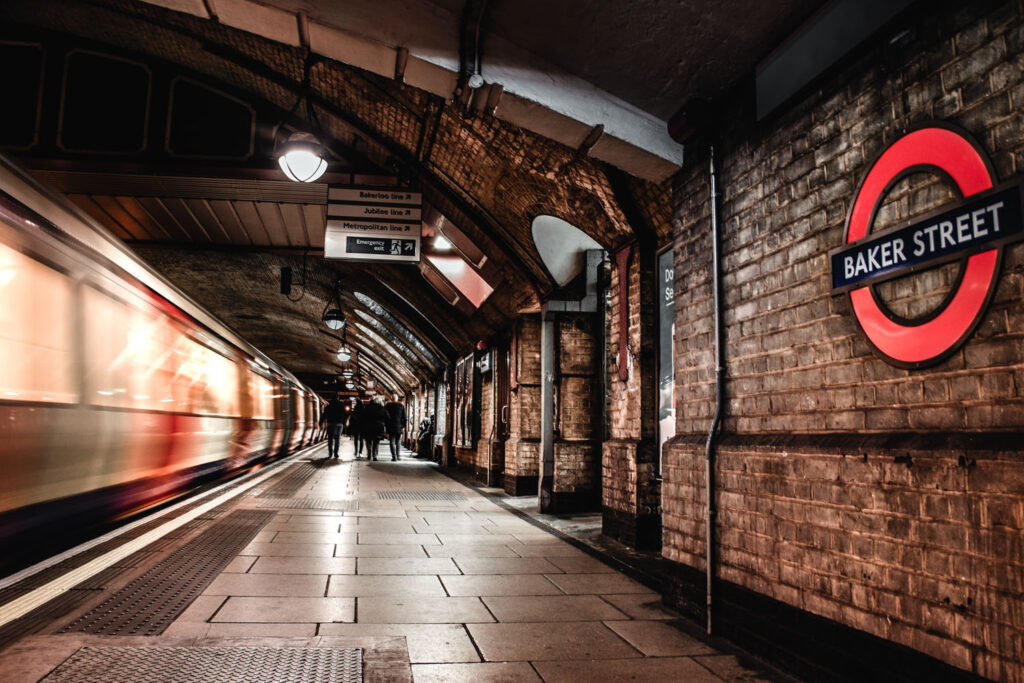
Oyster Cards vs. Contactless Payment
The biggest downside of using Contactless Payment is foreign transaction fees. All payments on the Tube will be made in GBP. Before you travel, check with your card issuer to ensure you are not charged expensive transaction fees for foreign currency when using contactless payments. These fees could become more costly than your contactless payment savings.
The other issue with Contactless Payment is that it doesn’t support concessions, such as senior, student, and children fares. Using contactless payment, you’ll automatically be charged the standard price for transport on the Tube. If you fall into any of those age categories, buying yourself the proper concession Oyster card for your age is much more important as you’ll receive the correct fare pricing.
Daily Transport Cap
No matter how much you travel throughout the day, there is a maximum fare cap of £8.10 (for zones 1-2) if you pay with your Oyster Card or Contactless payment. Any additional trips will be free if you’ve already passed your fare cap! As tourists, running around from place to place can be super handy! You can check out the daily transport limit on the TFL website by searching the different zones you’ll be travelling in. Thanks to these daily caps, tourists do not need to buy those daily transport cards, as you’ll find the prices far more competitive using the Oyster or contactless payment system.
Accessibility
Accessibility on the London Underground has come a long way in recent years, with many stations now equipped with step-free access. And other facilities to make travel easier for passengers with disabilities. For users in wheelchairs, the Tube offers a range of accessibility features to help them easily navigate the system. Some stations also have lifts or escalators to provide access to the platforms. Additionally, all newer trains are equipped with accessible features such as wider doors, wheelchair spaces, and audio and visual announcements to assist passengers with disabilities.
The Transport for London website provides detailed accessibility information for each station, including information on step-free access, lift availability, and other facilities such as accessible toilets and hearing loops. You can also download accessibility guides and maps to help you plan and make journeys.
More than 9,000 buses are wheelchair accessible. And Wheelchair users are not expected to pay to ride the city buses. To learn more about London’s Public Transport accessibility, check out this website.
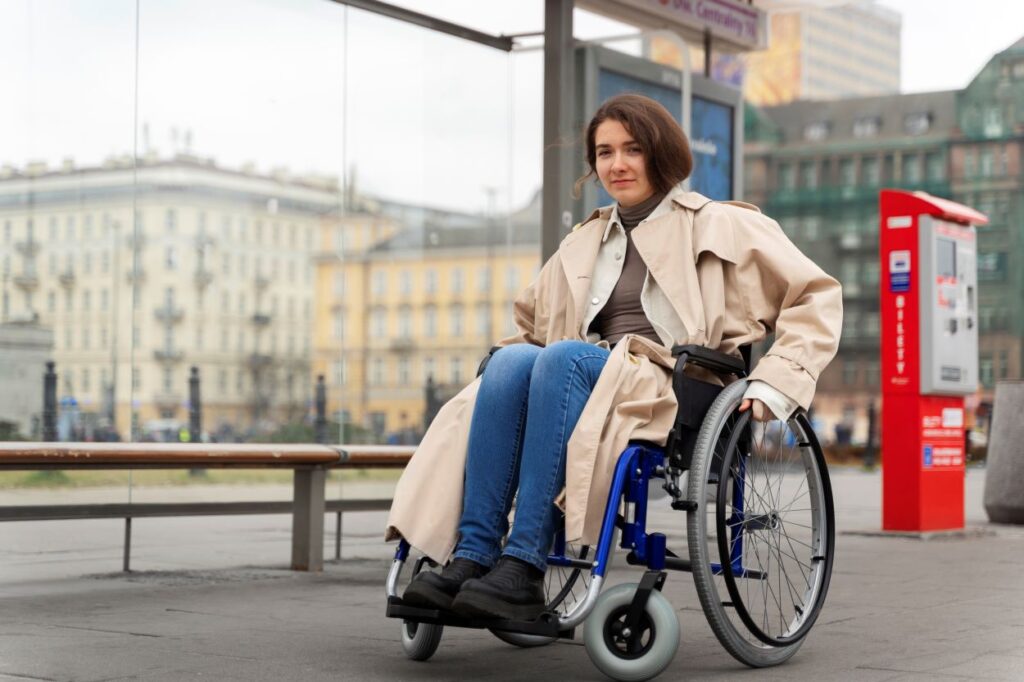
The London Underground
No matter where you’re heading in London, you’ll be able to get there in no time and with ease by using London’s phenomenal Underground metro system. The London Underground is one of the world’s oldest and largest underground railway networks, with 11 lines and 270 stations.
Each line has a unique colour and name, making it easier for travellers to navigate the city. Passengers can switch between lines at designated interchange stations, marked on the map by white circles atop the intersecting lines.
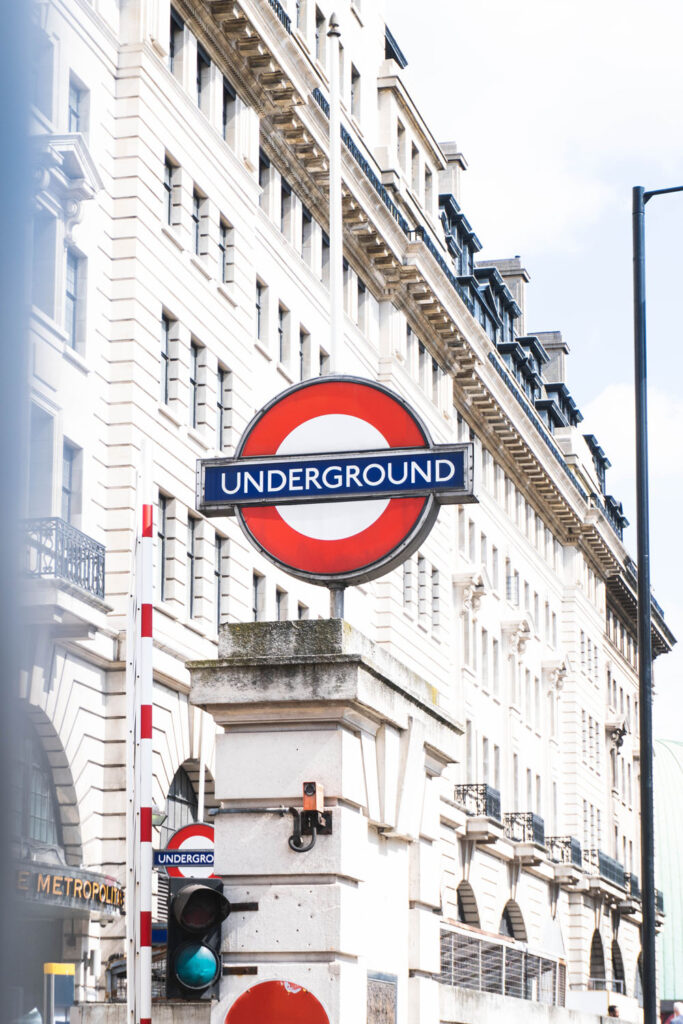
The London Underground, or ‘Tube’ for short, is a system divided into nine zones. Starting with Zone 1, which is centred around the main area of London. With each subsequent zone spreading outwards from this central point. Ending in Zone 9, which covers the outermost areas of Greater London. The fare for a Tube journey depends on the zones you travel through. Most major tourist sights are located in Zone 1 and 2, where the fares are the lowest. The fare will be calculated by the station in which you enter and the station you exit.
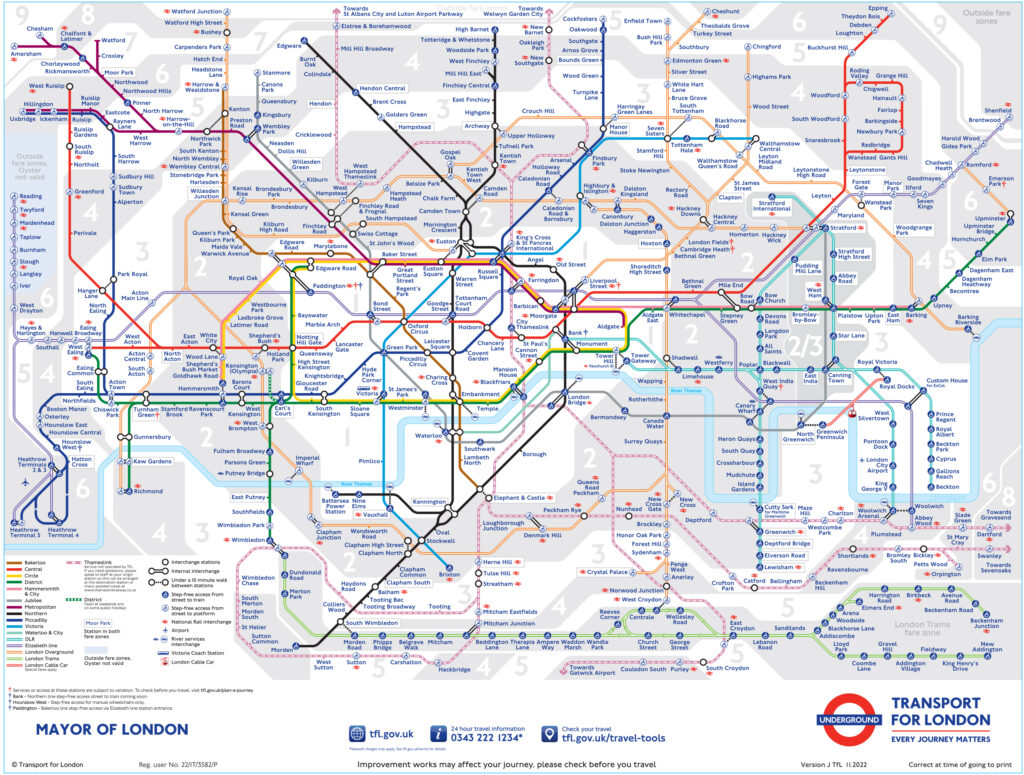
London Buses
The iconic London bus is a great way to see the city. With over 8,600 buses covering 700 routes, you can get pretty much anywhere in London by bus. Buses run from early morning until late at night, with some night buses running 24 hours. Taking the bus is a great way to see London’s sights and soak up the atmosphere if you’re not in a hurry. Go to the upper level, and you’ll get a scenic view as you ride.
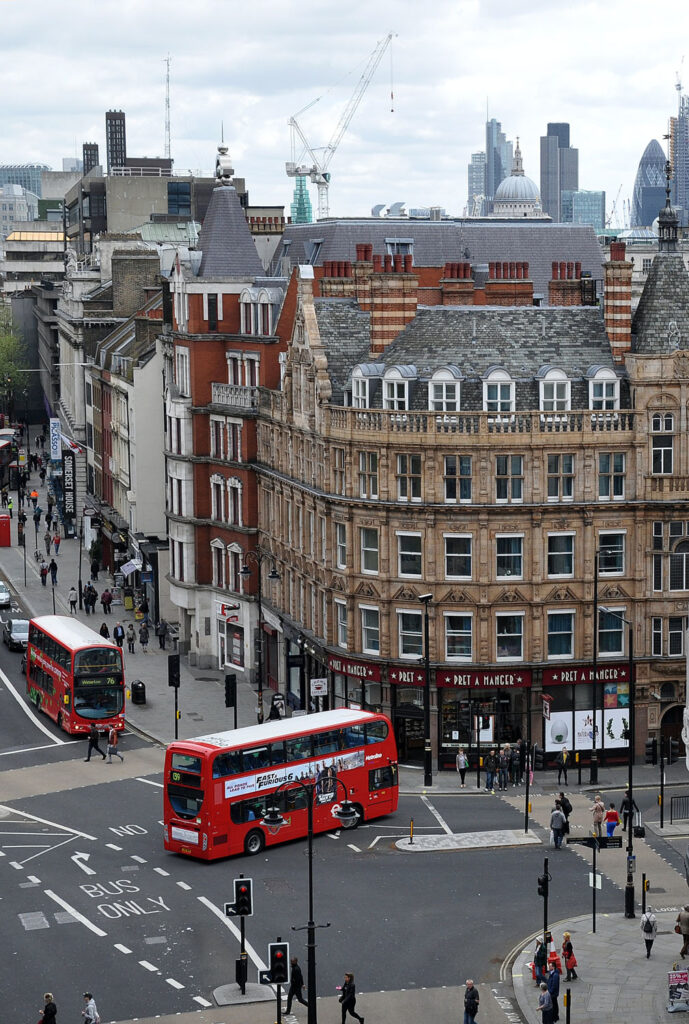
How to Flag Down a London Bus
Unlike bus services elsewhere I’ve travelled, just because you’re standing at a bus stop doesn’t immediately mean the incoming bus will stop for you. Since there are so many different routes that offer service at that same stop, you need to flag them down to indicate you would like to get on the incoming bus. When you see the bus approaching, raise your arm to signal the driver to stop. Once the bus has stopped, you can board it. If you have a contactless or Oyster card, tap it on the reader by the driver and find your seat! To get off the bus at your intended stop, press the bell button to alert the driver when you hear your stop announced on the system.
Take a Ride on the #11 Bus
If you ride any double-decker bus in London, ensure it’s the #11! This bus is often dubbed the “Sightseeing Route,” as it passes many of the city’s major landmarks and tourist attractions. The route passes through popular areas such as Chelsea, Kensington, and Westminster before ending on Liverpool Street. Some of the major landmarks and attractions that the #11 bus passes by include: Hyde Park, Marble Arch, Oxford Street, Trafalgar Square, Houses of Parliament, Westminster Abbey, St. Paul’s Cathedral, Victoria and Albert Museum and Harrods.
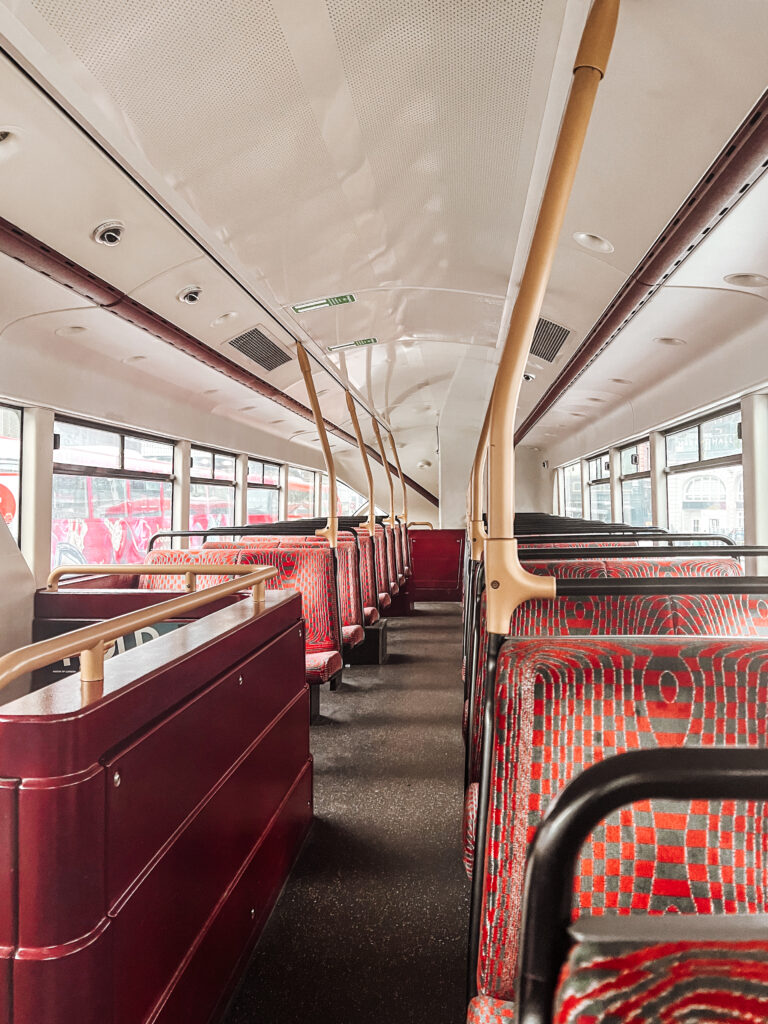
Many first-time tourists in London book tickets onto those Hop-On Hop-Off buses. These are considered special as they have open-top decks that provide some photo opportunities of iconic landmarks. And easily takes you from sight to sight around the city. But since London is prone to rain, you often pay £40 to sit inside on the lower level and miss out on all those sights. But you can always sit upstairs on the public bus as they are covered. And on the #11 route, you’ll see all those iconic landmarks. The route runs every 6-7 minutes during the day, making it a convenient and affordable way for visitors to see many of London’s top sights without the huge price tag. Bus fares are set at £1.75 per journey.
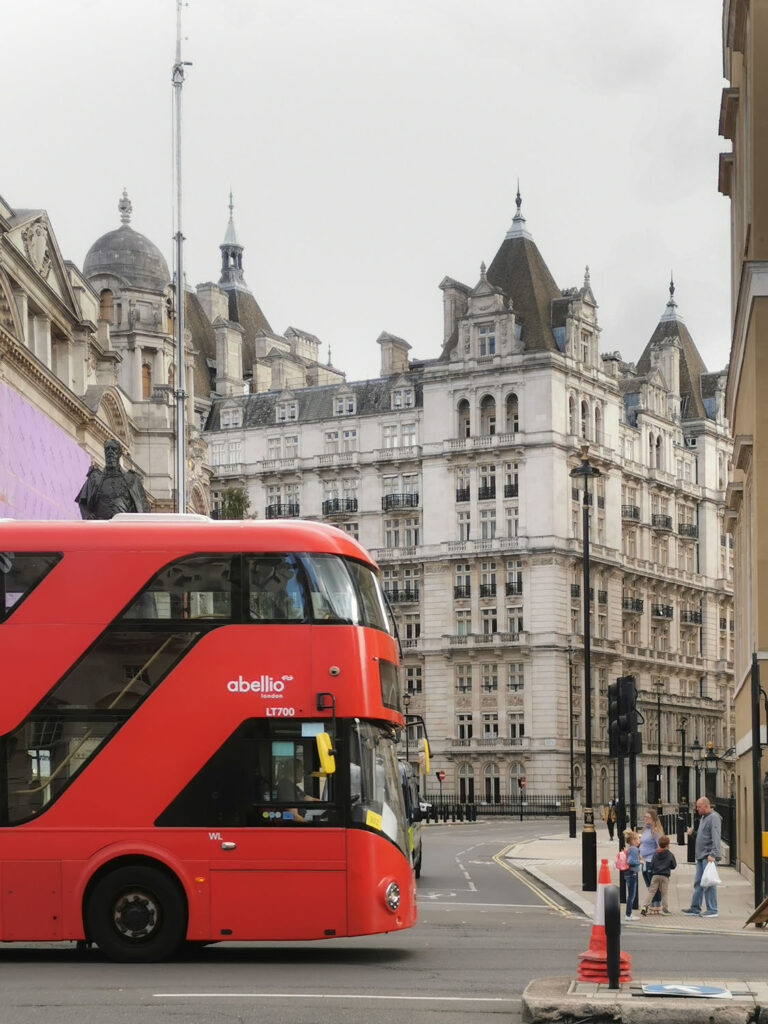
The DLR
The Docklands Light Railway, or DLR, is an automated light metro system that serves East and South London. The DLR is a great way to get to the financial district, Canary Wharf, and London City Airport. It’s also a great way to see some of London’s lesser-known sights, like Greenwich and the Royal Docks. You can use the same contactless payment or Oyster card on the DLR.
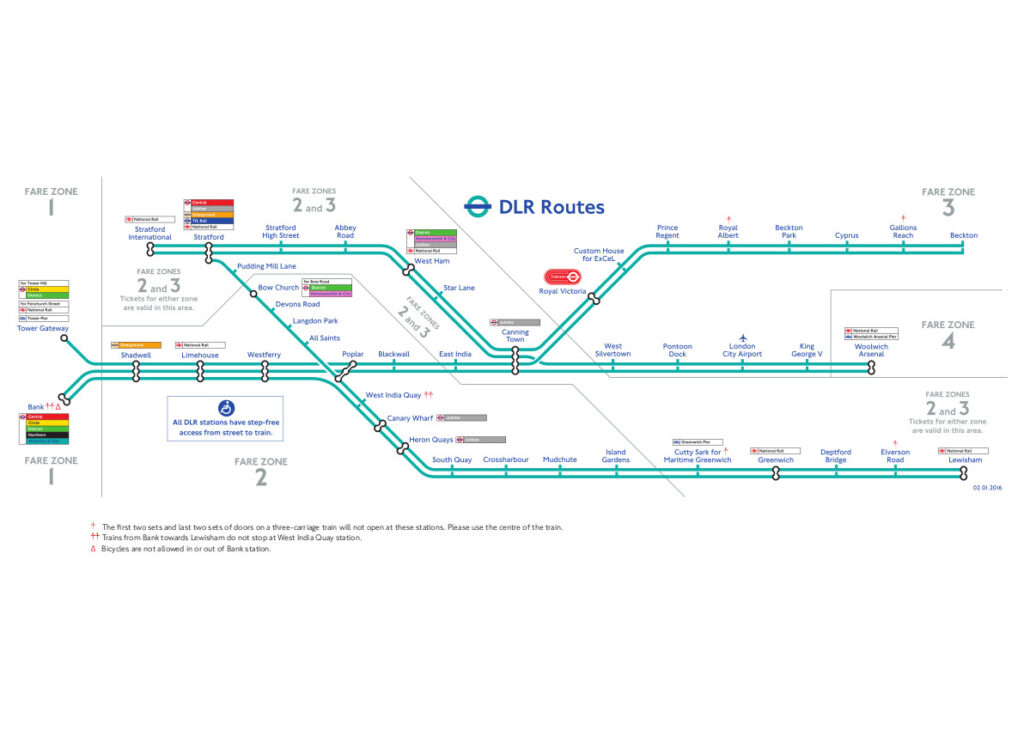
The Overground
The London Overground is a suburban rail network that covers much of Greater London. It’s a great way to get to places like Camden, Hackney. If you’re travelling with kids, the Overground has fantastic views of London, so sit by a window.
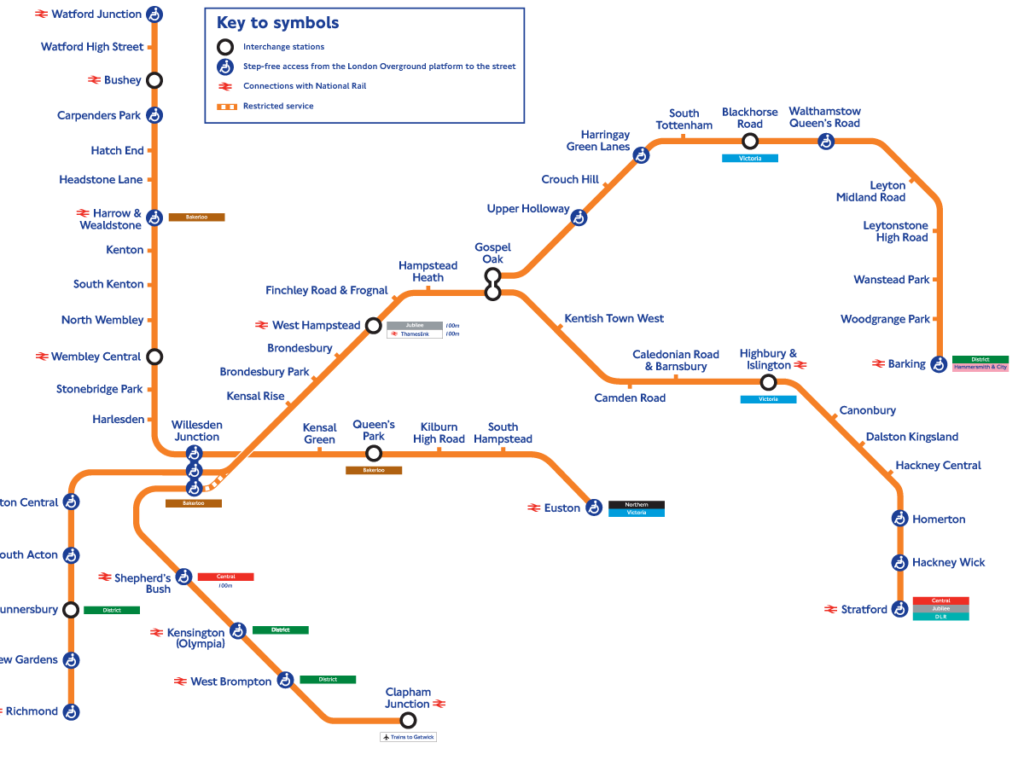
The River Bus
While in many other European river cities, taking a ride along the river is reserved for private boats and river cruises, in London, many boats are considered public transit. The River Bus service is a unique way to see London’s landmarks from the water, including the Tower Bridge and the London Eye. You can use your Oyster Card or contactless payment to ride the River Buses. The River Bus map might give you some ideas of the amazing places you can travel along the Thames, like Hampton Court, Greenwich, and even Woolwich.
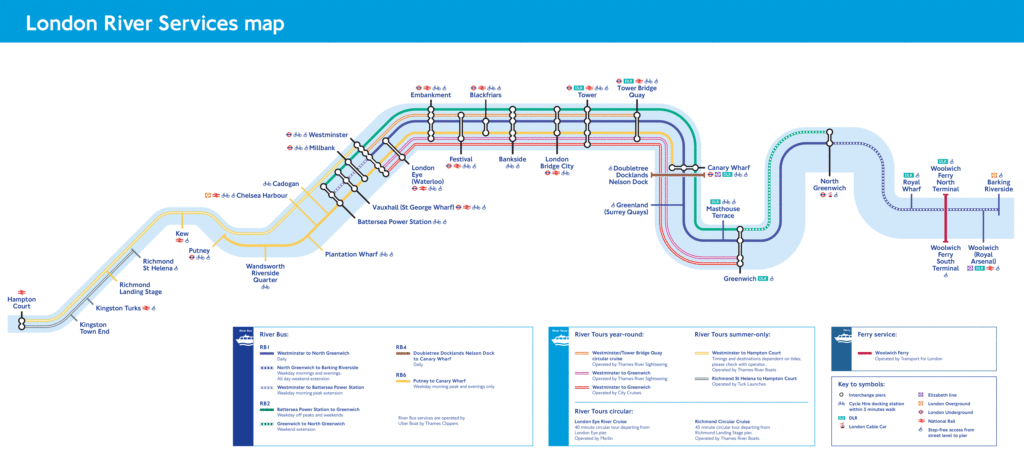
Navigating Public Transit System
There are a few different apps I use to navigate around the city. The first is the official TFL app. This app is often the most up-to-date regarding delays on the system. It provides several options for your journey, including step-free access for those users requiring accessible entrances. I especially love this app because it shows the fares alongside each option. That way, you won’t automatically choose the fastest option if the cheaper option is only a few minutes longer.
The one downside I found when using the TFL app was that while it does list the time on a bicycle to the destination, it does not list the walking times. In a city like London, walking is one of the best ways to explore as it allows you to best connect with the neighbourhood and make little detours whenever your eye catches something interesting. For this reason, I would also frequently use Google Maps, which allowed me to get the walking distances compared to public transport. Sometimes, I know I’m miles and miles from home and wouldn’t bother with Google Maps, but if I’m close enough, I would usually opt to just walk home. And see the sights along the way.
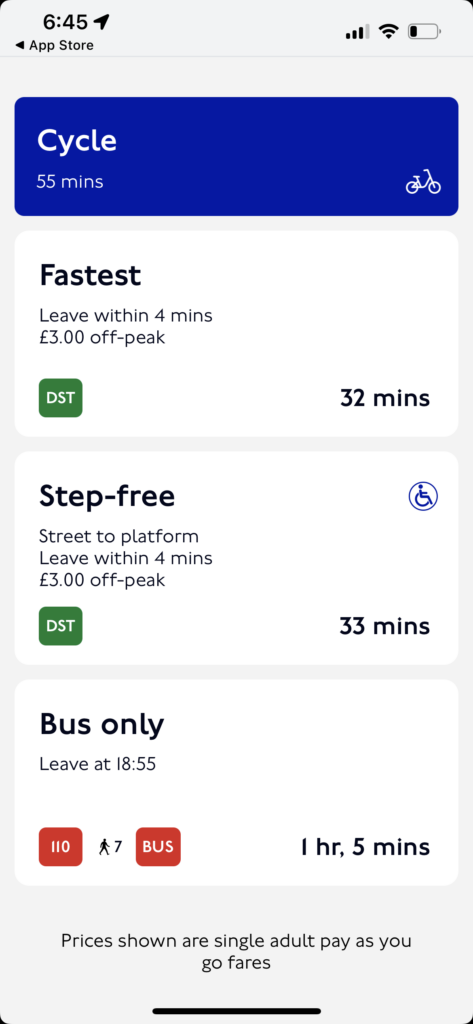
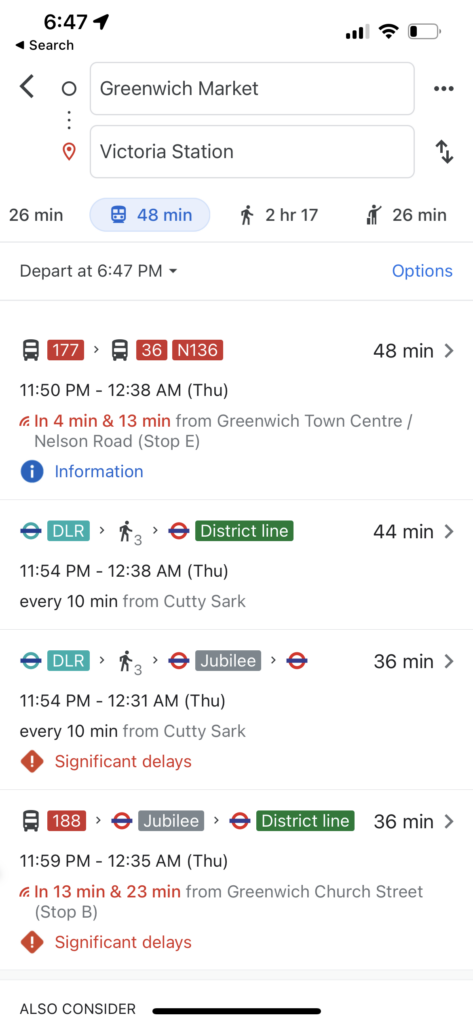
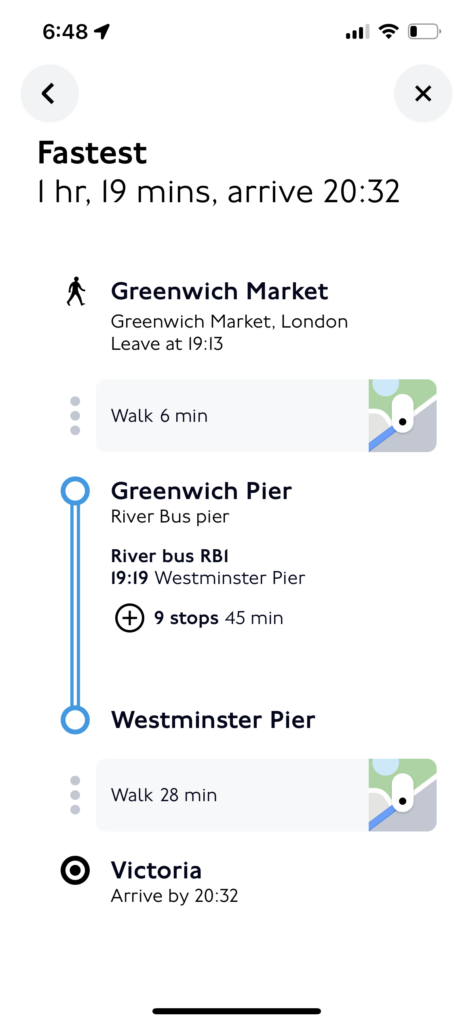
Tips on Using the London Public Transit
Plan your journey in Advance
Using the Transport for London website or app to plan your journey before you leave is always a good idea. This way, you know which line to take, where to change trains, and how long your journey will take.
The Tube generally runs from 5:00 am until midnight, with some lines running 24 hours on weekends. Operating hours are slightly reduced on Sunday. If you plan on staying out late on a weekday, be aware that the Tube might not be running after midnight, so make arrangements for alternative modes of transportation.
Avoid Rush Hour
Be aware that, like all big cities, various popular Tube lines can get extremely crowded during peak hours. This might mean you might have to wait for a few trains to arrive before finding a spot, even to stand inside. You’ll easily miss these crowded trains if you avoid travelling on the Tube during rush hour. So plan around this if possible.
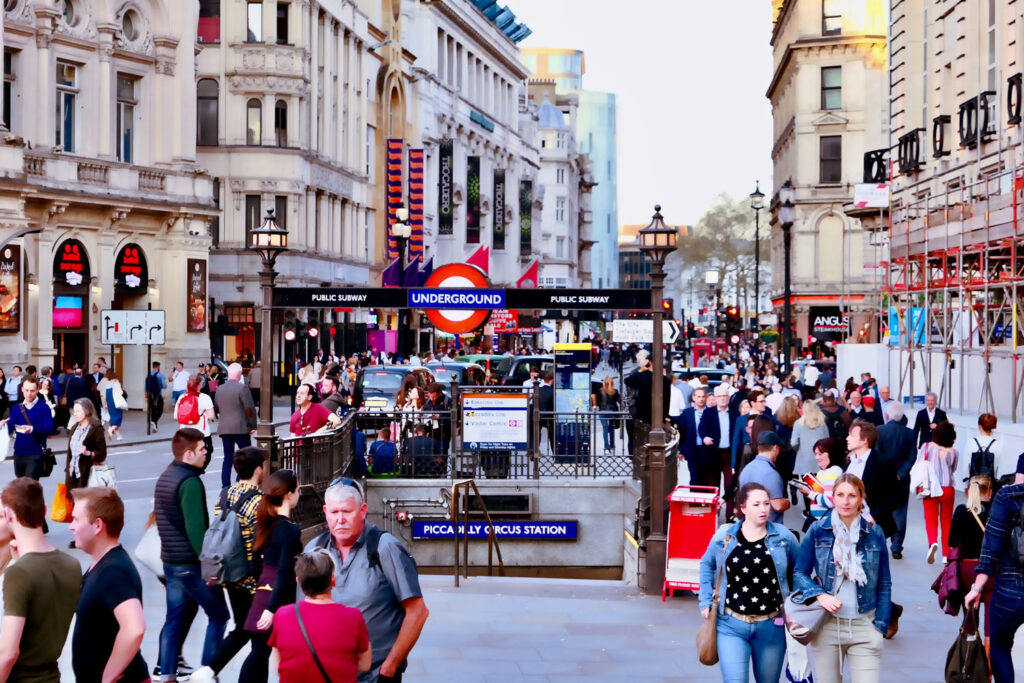
Mind the gap
The famous “mind the gap” announcement is more than just a catchphrase. The first time I ever really saw this fabled “gap,” I was shocked. In most other metros around the world, the gap between the platform and the train is, at most, a few inches, but I’ve arrived at a station in London where it almost required me to jump across. So they really aren’t kidding around! So watch your step when boarding or exiting a train, as there may be a significant gap between the platform and the train.
Stand on the right
In London, when using escalators, always stand on the right side. And leave the left side free for people who want to walk up or down the escalator.
Keep An Eye on Your Belongings
In London, like in many big cities, the Underground is a popular place for pickpockets. They are good at their “job,” so many people don’t know their wallet is missing before it’s too late. Keep your bags close, and wear any backpacks on the front of your body. Be sure when using your phone to keep a good handle on it, as some people have had their phones swiped right out of their hands.
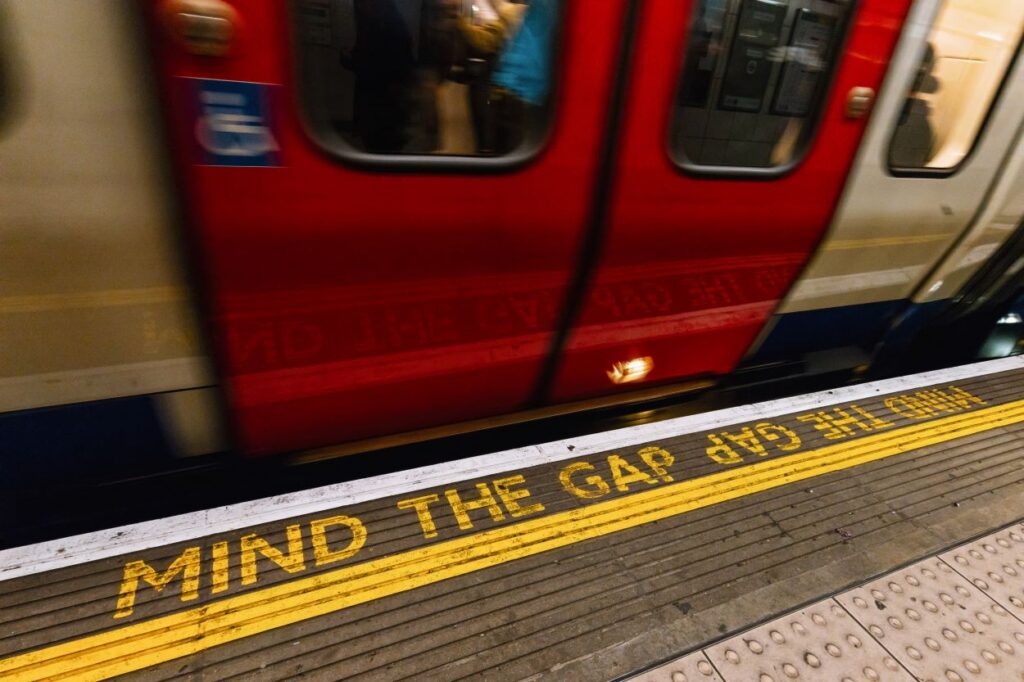
Be courteous and quiet
Londoners take public transportation very seriously, and being courteous and considerate to other passengers is important. Offer your seat to someone who needs it. Certain seats on the Tube and bus are designated for people with disabilities. Remember, not all disabilities are visible, so if someone asks for the seat, always assume they need it and give it up without question. Remember not to talk too loudly on the Tube. Many tourists are spotted a mile away solely by their loud voices. Best to keep the volume down to not bring attention to yourself.
How do I get from the Airport to my Hotel in London?
London Heathrow is one of the busiest airports in the world, serving millions of travellers each year. And getting from the airport to the city center can seem overwhelming. But there are plenty of options for incoming travellers without resorting to expensive taxis or Uber rides.
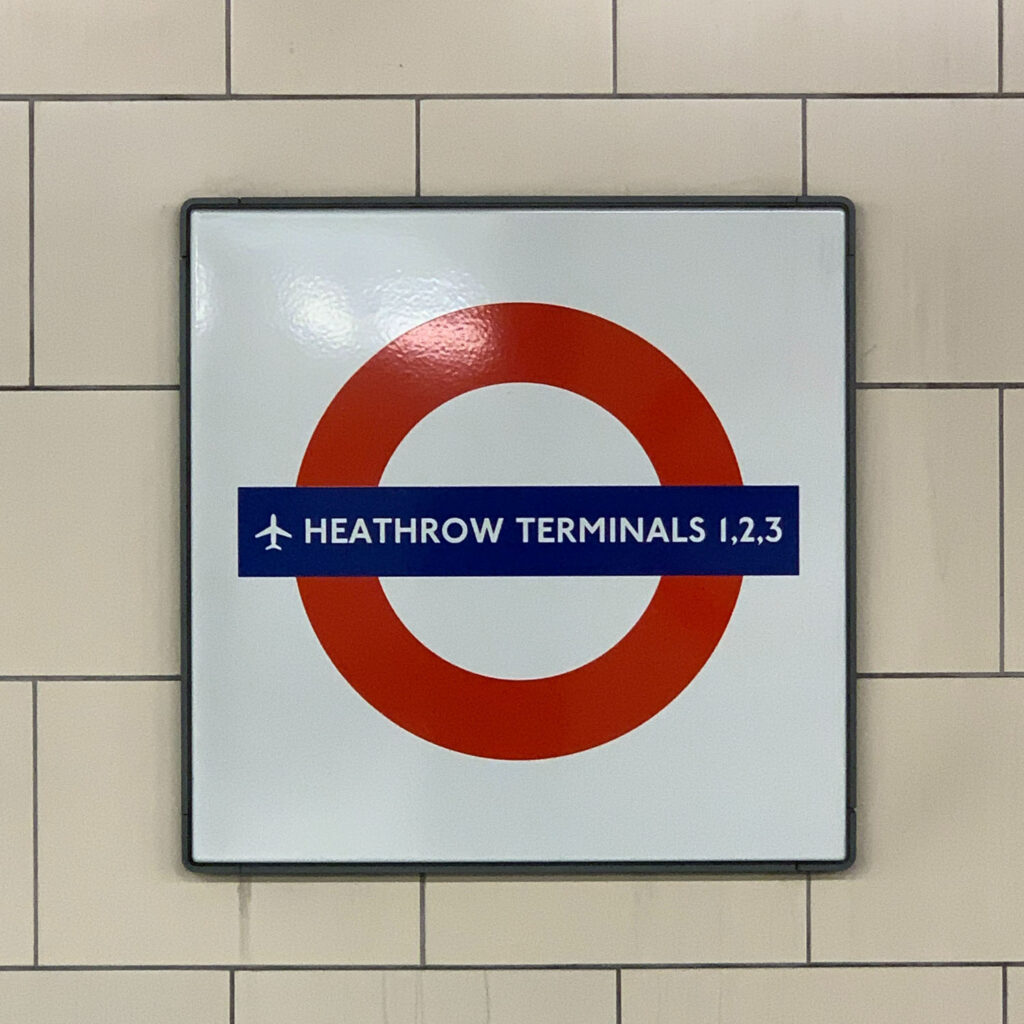
Is the Heathrow Express Worth it?
One of the things you’ll hear repeatedly is the advice to book the Heathrow Express from the airport into the city. And honestly, the Heathrow Express is a big rip-off unless you can book an advanced ticket more than 90 days in advance. Yes, you heard me right; now let me explain.
The Heathrow Express is a non-stop train service between Heathrow Airport and Paddington Station in central London. The journey takes just 15 minutes, and trains run every 15 minutes during peak hours. If you buy a Fixed Date Saver Ticket 90 days in advance, the one-way fare costs only £5.50! Which is cheaper than the Tube. If you book two months in advance, your ticket will cost £16.50. And anything less than that will cost a whopping £25 for one person, one way. In fact, the Heathrow Express is considered the most expensive per-minute train journey in the world. If you pay the regular price.
Add onto this the considerations of travelling with more than one person. If you’re travelling with four people, you’ll find that even a taxi or Uber into the city might be cheaper when you add it all up. Depending on traffic, of course. So if you can book your tickets in advance, sure go for the Heathrow Express option. But if you can’t commit to advanced bookings, consider some alternatives.
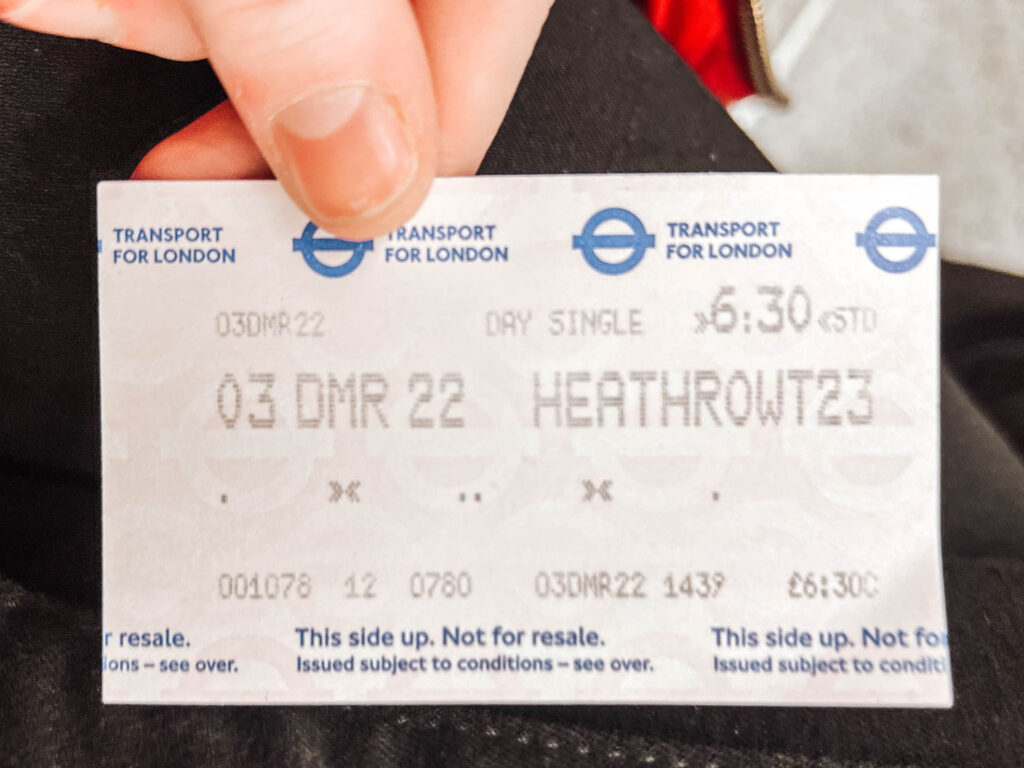
Consider Taking the London Underground
Even if you do take the Heathrow Express, most likely, your journey won’t end at Paddington Station, where the Heathrow Express train ends. This is only one part of your transit to your final destination. And you’ll probably need to hop onto the London Underground one way or another. The London Underground, also known as the Tube, is the fastest and most efficient way to get from Heathrow to anywhere in London. Not just Paddington Station.
Take the New Elizabeth Line
As of 2023, the Underground finished construction on the new Elizabeth Line that (just like the Heathrow Express) runs from Heathrow to Paddington Station. The journey on the Tube only takes approximately 35 minutes. And will cost you just £12.80 with an Oyster Card or with Contactless payment. (I’ll go into all the details about Oyster Cards and Contactless payment later in this post.) The Elizabeth line will also continue on into Central and East London. This way, you might even be able to get directly to your hotel.
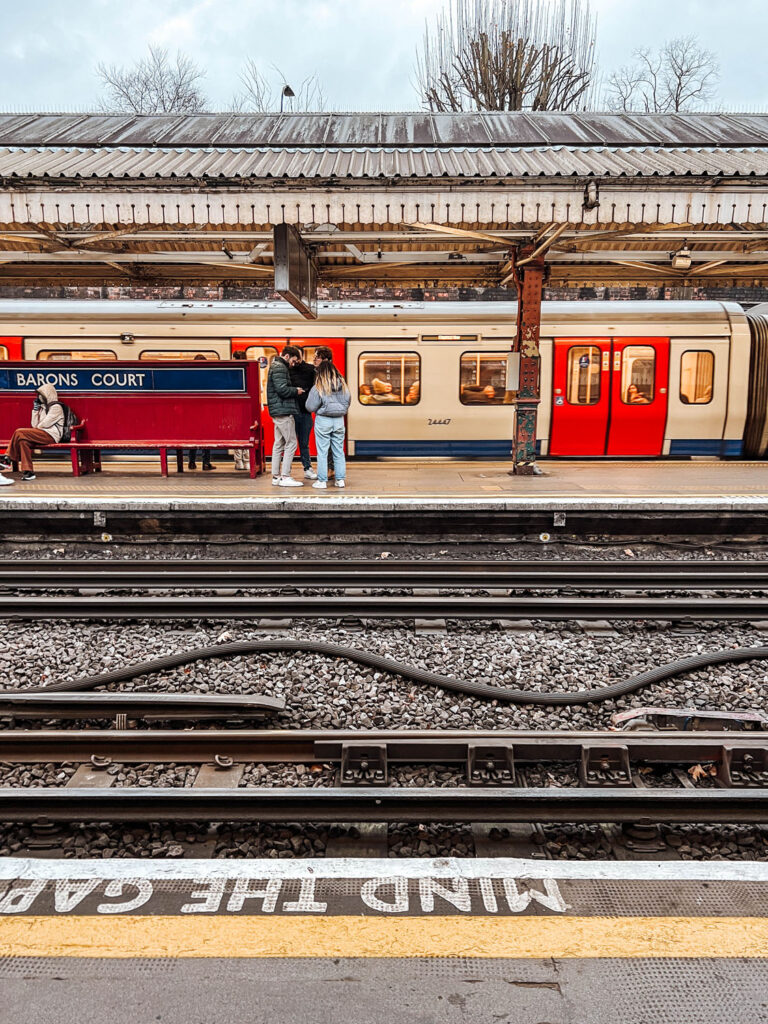
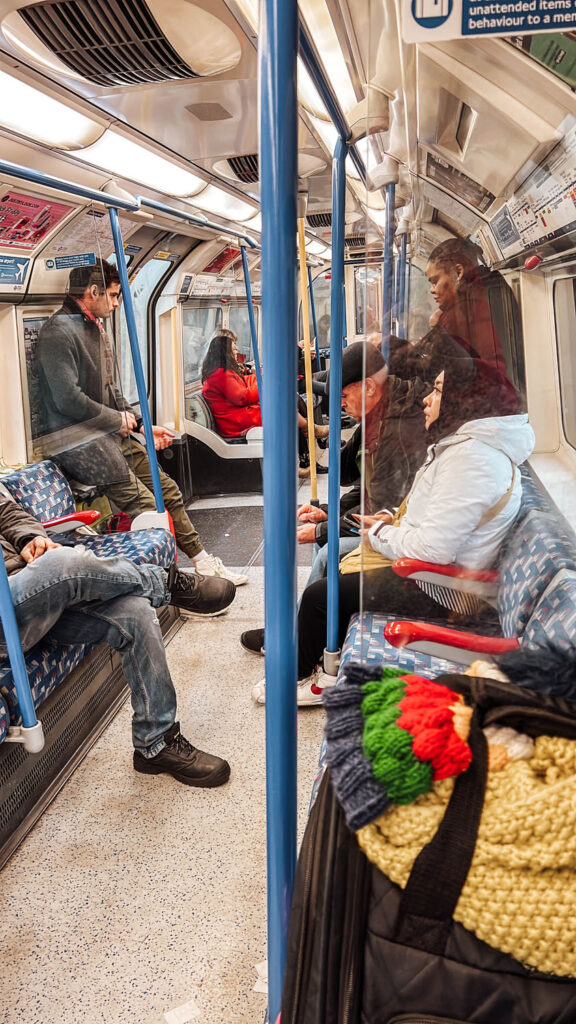
The Picadilly Line
It’s always worth checking the official London Underground Website’s Journey Planner to see if you can take the Picadilly Line from the airport to your hotel. I stayed near Victoria Station, and I found that taking the Picadilly Line to Earl’s Court and switching to the District Line got me to my door in under 40 minutes. And for just £5.60 for Oyster Card holders or with contactless payment. It otherwise costs £6.30 if you pay in cash. It’s always worth checking the journey planner, but make sure you edit the preferences to include only the Underground only. See below.
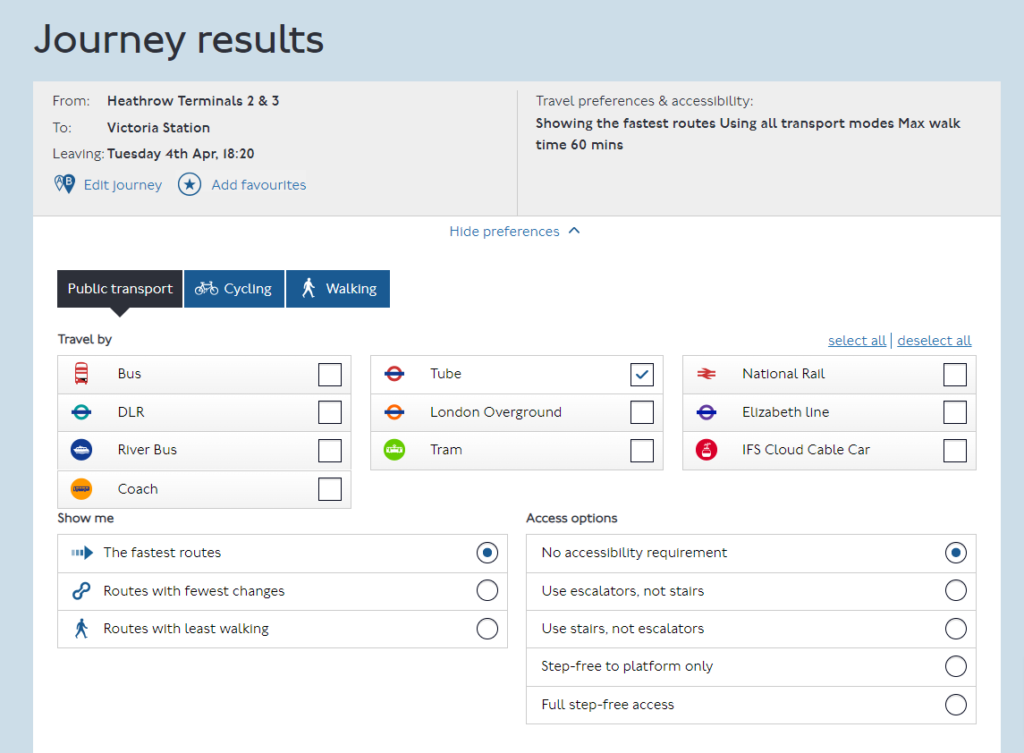
Travelling from Gatwick Airport
If, on the other hand, you are arriving via Gatwick airport, we run into the same issue here with their “express” airport train service. The Gatwick Express one-way ticket costs £20 and takes 30 minutes to arrive at Victoria Station. But you can also take the Southern Railway from Gatwick Airport to the very same station. This ticket costs as little as £9.50 with an Oyster Card or Contactless payment. And takes a shocking 33 minutes, only 3 minutes more than the express train!
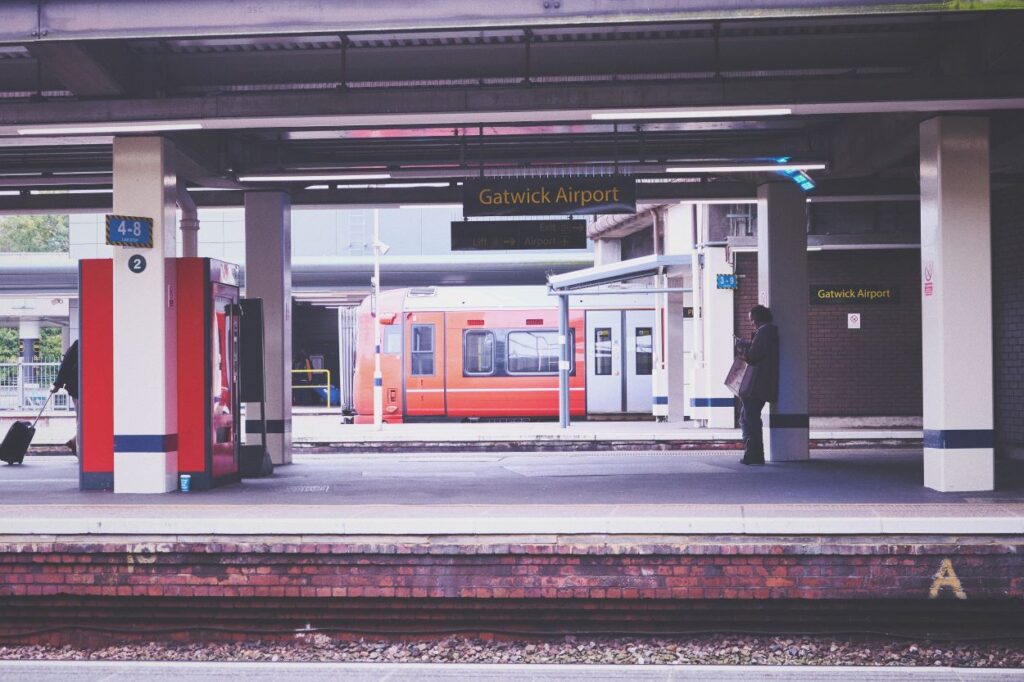
Navigating London’s public transportation system may seem daunting at first, but with a little bit of preparation and some basic knowledge, you can travel around the city like a pro. Whether you’re using the Tube, bus, or other modes of transportation, there are plenty of tips and tricks to help you get where you need to go quickly and easily. From planning your journey in advance and getting an Oyster card to minding the gap and being courteous to other passengers, these simple strategies can help you make the most of your time in London and avoid common pitfalls. So next time you’re exploring this vibrant and exciting city, don’t be afraid to embrace public transportation and discover everything that London has to offer.
Happy Travels, Adventurers

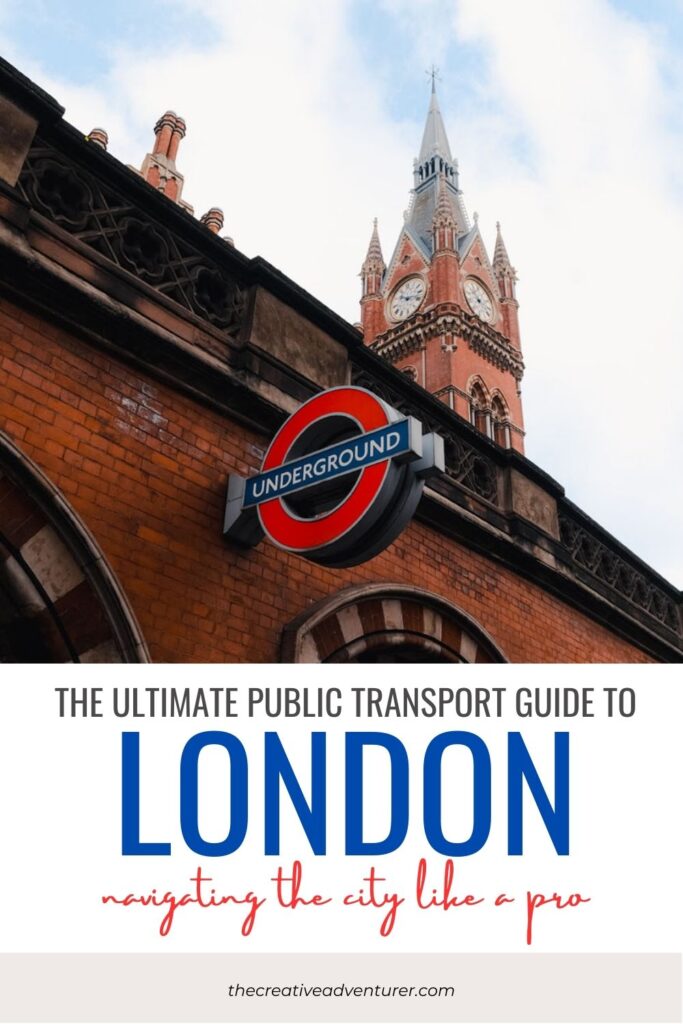
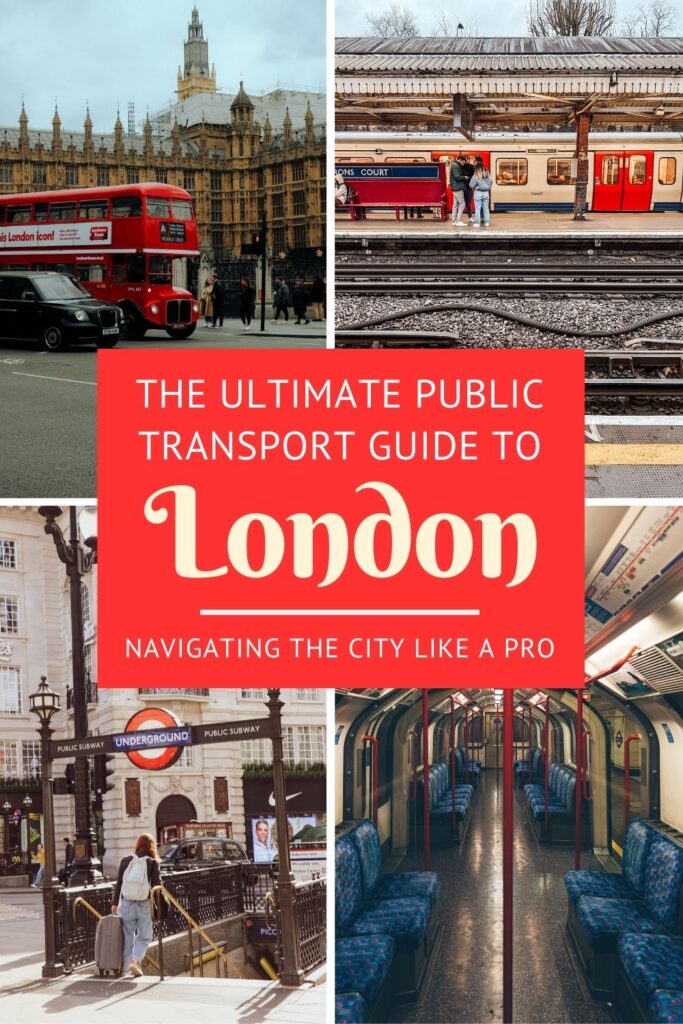
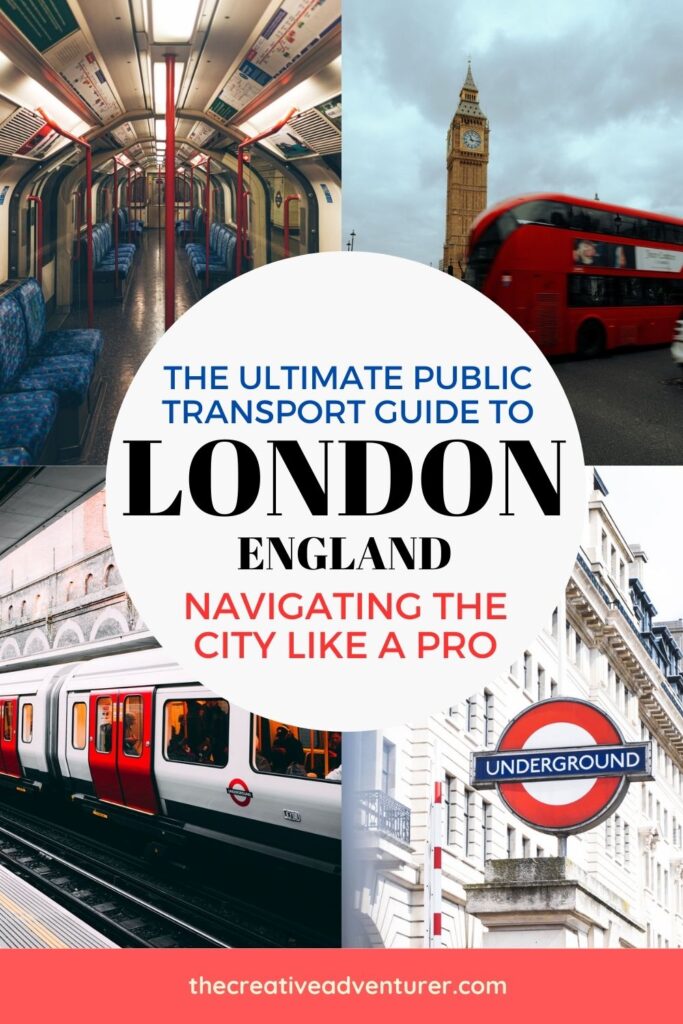
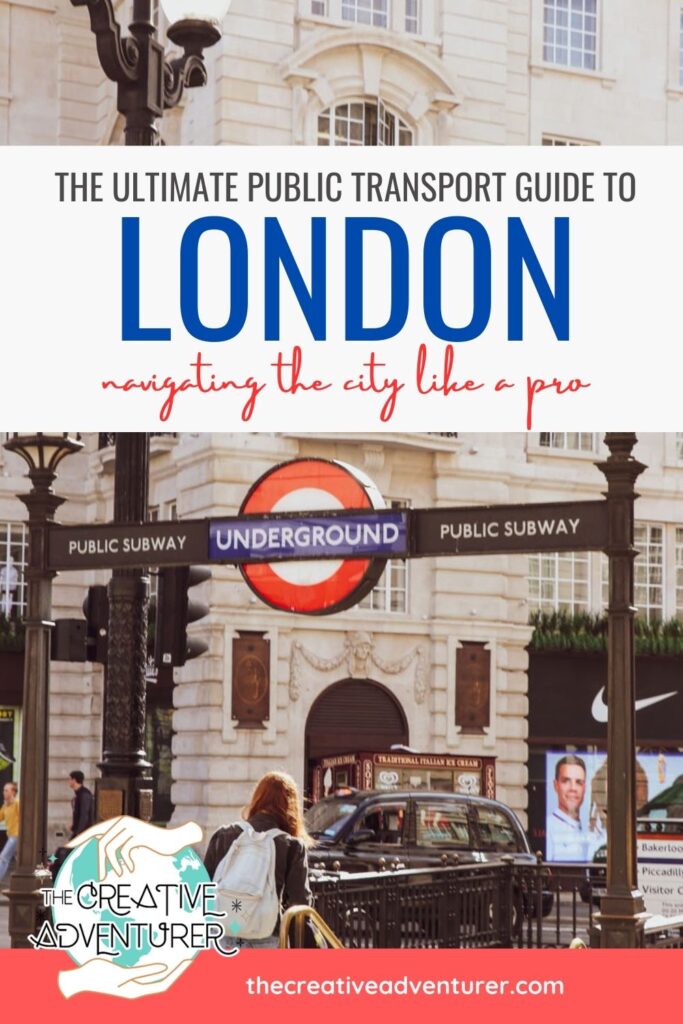
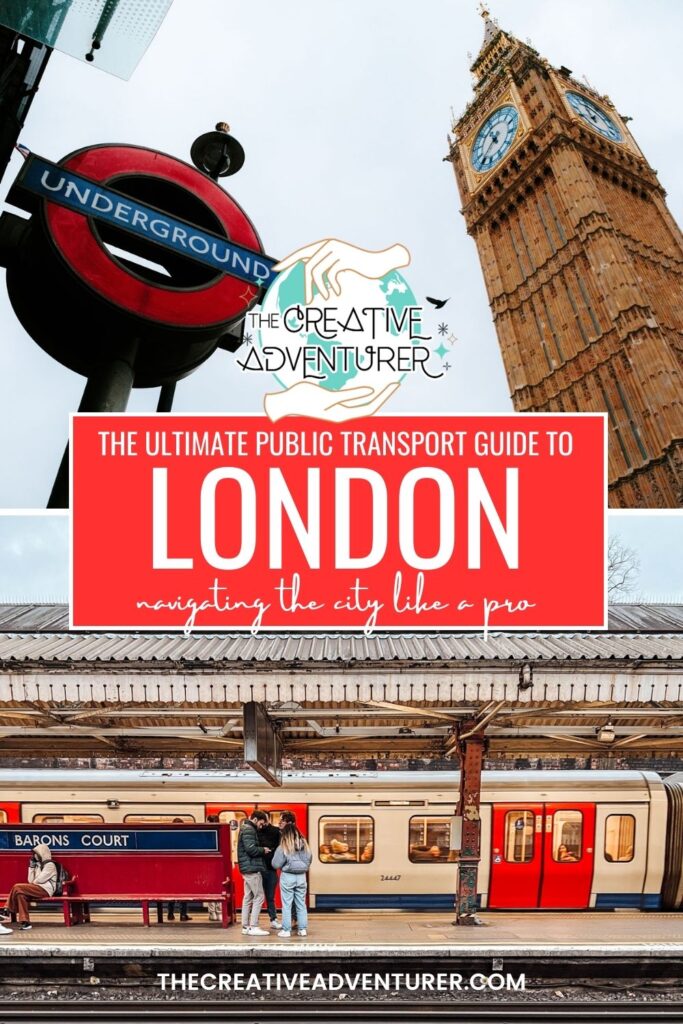


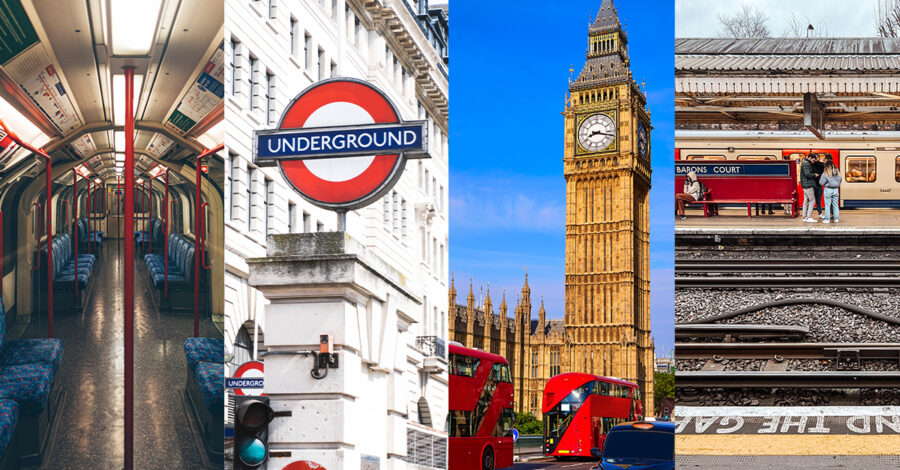
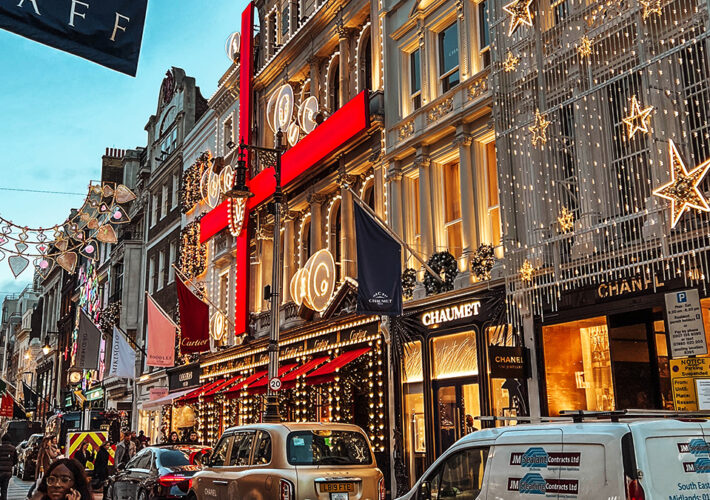
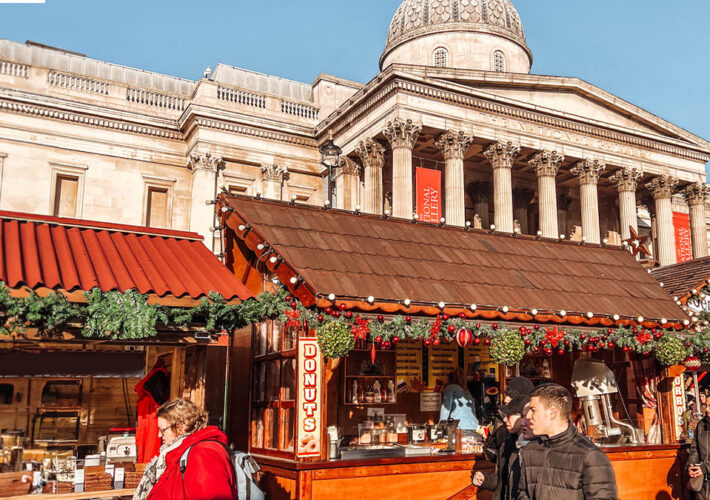

Leave a Comment